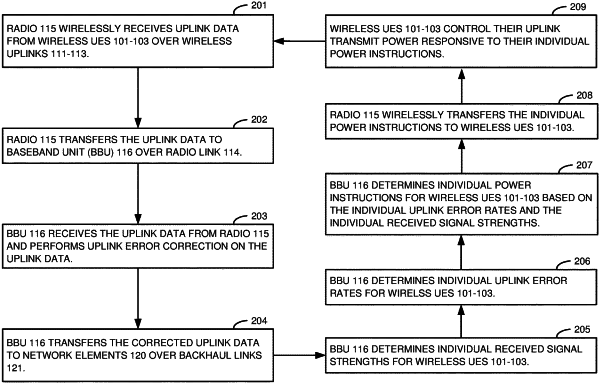| CPC H04W 52/146 (2013.01) [H04B 17/318 (2015.01); H04L 1/1819 (2013.01); H04L 1/203 (2013.01); H04W 80/02 (2013.01); H04W 88/085 (2013.01); H04W 88/14 (2013.01)] | 20 Claims |

|
1. A method of operating a wireless access node to control transmit power of wireless User Equipment (UEs), the method comprising:
a radio wirelessly receiving uplink data from the wireless UEs over wireless uplinks and transferring the uplink data to a Baseband Unit (BBU);
the BBU receiving the uplink data from the radio, transferring the uplink data to a communication network, determining individual uplink signal strengths for individual ones of the wireless UEs, determining individual uplink interference levels for the individual ones of the wireless UEs, and determining individual uplink error rates for individual ones of the wireless UEs;
the BBU determining individual power instructions for the individual ones of the wireless UEs based on the individual uplink signal strengths, the individual uplink interference levels, and the individual uplink error rates for the individual ones of the wireless UEs and transferring the individual power instructions to the radio; and
the radio receiving the individual power instructions for the individual ones of the wireless UEs from the BBU and wirelessly transferring the individual power instructions to the individual ones of the wireless UEs, wherein the individual ones of the wireless UEs control their transmit power responsive to the individual power instructions.
|